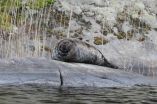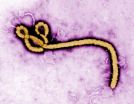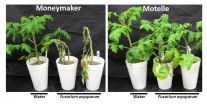(Press-News.org) The critically endangered Saimaa ringed seal, which inhabits Lake Saimaa in Finland, has extremely low genetic diversity and this development seems to continue, according to a recent study completed at the University of Eastern Finland. In her doctoral dissertation, Mia Valtonen, MSc, analysed the temporal and regional variation in the genetic diversity of the endangered Saimaa ringed seal. The population is only around 300 individuals divided into smaller sub-populations and with very little migration among between them.
The study developed a method allowing the identification of individual Saimaa ringed seals on the basis of a DNA sample, and showed that placentas collected from birth-lair sites are suitable for the genetic monitoring of the population. The data of the study comprised tissue samples taken from discovered carcasses of Saimaa ringed seals and placentas collected from birth-lair sites, as well as reference samples taken from Baltic ringed seals and Ladoga ringed seals.
Lowest genetic diversity among seals
Ringed seals began to inhabit the Baltic basin after the last glacial period. As a result of post-glacial rebound, ringed seals also ended up landlocked in lakes such as Saimaa and Ladoga. The study showed that during its nearly 10,000 years of isolation, the Saimaa ringed seal has lost the majority of its original genetic diversity. During the past century, human activity – for example hunting, fishing and habitat pollution – has caused a drastic decline in the population and increasingly decreased its genetic diversity.
The study found that the genetic diversity of the Saimaa ringed seal is lower than in any other seal population in the world, and that this diversity continues to decrease. In comparison, the Ladoga ringed seal, whose population size is ten times higher than that of the Saimaa ringed seal, has maintained its genetic diversity at nearly as high a level as marine ringed seals. The results are based on analyses of mitochondrial and microsatellite DNA variation in the Saimaa ringed seal, the Ladoga ringed seal, and the Baltic ringed seal.
Isolated populations don't mix
The study discovered significant genetic differentiation among the breeding areas of the Saimaa ringed seal, which means that the population is fragmented into smaller sub-populations. This is a surprising observation, because the Saimaa ringed seal is a very mobile mammal and the distances in Lake Saimaa are very short in comparison to the sea environment. In marine environments, only weak differentiation between ringed seal populations living thousands of kilometres apart has been observed.
The division of the Saimaa ringed seal population into smaller sub-populations is caused by a fragmented habitat, small population size, and different behavioural patterns. Female Saimaa ringed seals exhibit fidelity to their natal area and they have a tendency to stay in that area for breeding. Male Saimaa ringed seals, on the other hand, are more prone to disperse; however, not enough to maintain the genetic uniformity of the population.
Placenta reveals a pup's DNA
Genetic methods and samples which can be collected without capturing or even seeing the animal make it easier to monitor species that are few in number, evasive, and endangered. The study developed a genetic method which allows the identification of individual Saimaa ringed seals. Furthermore, the study tested the usability of placentas collected from birth-lair sites as a source of genetic information.
It was discovered that the DNA of a pup can be reliably extracted from the umbilical cord, allowing the placenta to serve as the pup's DNA sample. A later comparison between a DNA sample taken from an individual ringed seal in the wild and a DNA sample from the placenta makes it possible to determine the ringed seal's birth site and to obtain information about how it has dispersed.
Translocations would increase gene flow
Genetic diversity is an indicator of a species' ability to adapt to environmental change. Small and fragmented populations lose genetic diversity faster than larger, uniform populations. A specific concern for the Saimaa ringed seal is the fact that the small population is divided into even smaller sub-populations, and that the decrease of the genetic diversity in the Saimaa ringed seal seems to continue.
The best way to prevent further decrease in genetic diversity is to drastically increase the overall population size. Moreover, translocations of Saimaa ringed seals in order to increase gene flow between the different parts of Lake Saimaa should also be considered as a short-term measure. The significance of genetic methods in the monitoring of seal populations and in the evaluation of the success of conservation efforts will become increasingly important in the future.
INFORMATION:
The results were originally published in Conservation Genetics, Ecology & Evolution, and BMC Ecology.
The doctoral dissertation, entitled Conservation Genetics of the Saimaa Ringed Seal – Insights into the History of a Critically Endangered Population, is available for download at http://urn.fi/URN:ISBN:978-952-61-1583-2
For further information, please contact: Mia Valtonen, tel. +358504424404, mia.valtonen (at) uef.fi
BUFFALO, N.Y. — A new study is helping to rewrite Ebola's family history.
The research shows that filoviruses — a family to which Ebola and its similarly lethal relative, Marburg, belong — are at least 16-23 million years old.
Filoviruses likely existed in the Miocene Epoch, and at that time, the evolutionary lines leading to Ebola and Marburg had already diverged, the study concludes.
The research was published in the journal PeerJ in September. It adds to scientists' developing knowledge about known filoviruses, which experts once believed came ...
Adherent cells, the kind that form the architecture of all multi-cellular organisms, are mechanically engineered with precise forces that allow them to move around and stick to things. Proteins called integrin receptors act like little hands and feet to pull these cells across a surface or to anchor them in place. When groups of these cells are put into a petri dish with a variety of substrates they can sense the differences in the surfaces and they will "crawl" toward the stiffest one they can find.
Now chemists have devised a method using DNA-based tension probes to ...
Tempe, Ariz. (Oct. 23, 2014) - New research findings from a team of prevention scientists at Arizona State University demonstrates that a family-focused intervention program for middle-school Mexican American children leads to fewer drop-out rates and lower rates of alcohol and illegal drug use.
"This is the first randomized prevention trial that we're aware of to show effects on school dropout for this population," said Nancy Gonzales, Foundation Professor in the REACH Institute and Psychology Department, College of Liberal Arts and Sciences at Arizona State University. ...
RIVERSIDE, Calif. – Plant breeders have long identified and cultivated disease-resistant varieties. A research team at the University of California, Riverside has now revealed a new molecular mechanism for resistance and susceptibility to a common fungus that causes wilt in susceptible tomato plants.
Study results appeared Oct. 16 in PLOS Pathogens.
Katherine Borkovich, a professor of plant pathology and the chair of the Department of Plant Pathology and Microbiology, and colleagues started with two closely related tomato cultivars: "Moneymaker" is susceptible ...
ORLANDO, Fla. – New research shows obese children with asthma may mistake symptoms of breathlessness for loss of asthma control leading to high and unnecessary use of rescue medications. The study was published online in the Journal of Allergy and Clinical Immunology (JACI), the official scientific journal of the American Association of Allergy, Asthma and Immunology.
"Obese children with asthma need to develop a greater understanding of the distinct feeling of breathlessness in order to avoid not just unnecessary medication use, but also the anxiety, reduced quality ...
Just three years ago, a patient at Sahlgrenska University Hospital received a blood vessel transplant grown from her own stem cells.
Suchitra Sumitran-Holgersson, Professor of Transplantation Biology at The Univerisity of Gothenburg, and Michael Olausson, Surgeon/Medical Director of the Transplant Center and Professor at Sahlgrenska Academy, came up with the idea, planned and carried out the procedure.
Missing a vein
Professors Sumitran-Holgersson and Olausson have published a new study in EBioMedicine based on two other transplants that were performed in 2012 at Sahlgrenska ...
Gossip is pervasive in our society, and our penchant for gossip can be found in most of our everyday conversations. Why are individuals interested in hearing gossip about others' achievements and failures? Researchers at the University of Groningen in the Netherlands studied the effect positive and negative gossip has on how the recipient evaluates him or herself. The study is published in Personality and Social Psychology Bulletin.
In spite of some positive consequences, gossip is typically seen as destructive and negative. However, hearing gossip may help individuals ...
New data shows that healthcare and personal costs to support survivors of stroke remains high 10 years on.
The Monash University research, published today in the journal Stroke, is the first to look at the long-term costs for the two main causes of stroke; ischemic where the blood supply stops due to a blood clot, and hemorrhagic, which occurs when a weakened blood vessel supplying the brain bursts.
Previous studies based on estimating the lifetime costs using patient data up to 5 years after a stroke, suggested that costs peaked in the first year and then declined ...
Metamaterials, a hot area of research today, are artificial materials engineered with resonant elements to display properties that are not found in natural materials. By organizing materials in a specific way, scientists can build materials with a negative refractivity, for example, which refract light at a reverse angle from normal materials. However, metamaterials up to now have harbored a significant downside. Unlike natural materials, they are two-dimensional and inherently anisotropic, meaning that they are designed to act in a certain direction. By contrast, three-dimensional ...
An unprecedented boom in hydropower dam construction is underway, primarily in developing countries and emerging economies. While this is expected to double the global electricity production from hydropower, it could reduce the number of our last remaining large free-flowing rivers by about 20% and pose a serious threat to freshwater biodiversity. A new database has been developed to support decision making on sustainable modes of electricity production. It is presented today at the international congress Global Challenges: Achieving Sustainability hosted by the University ...


